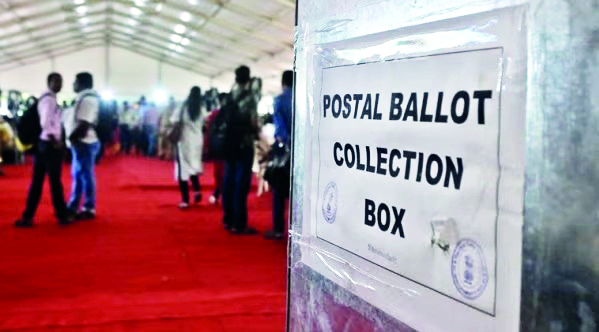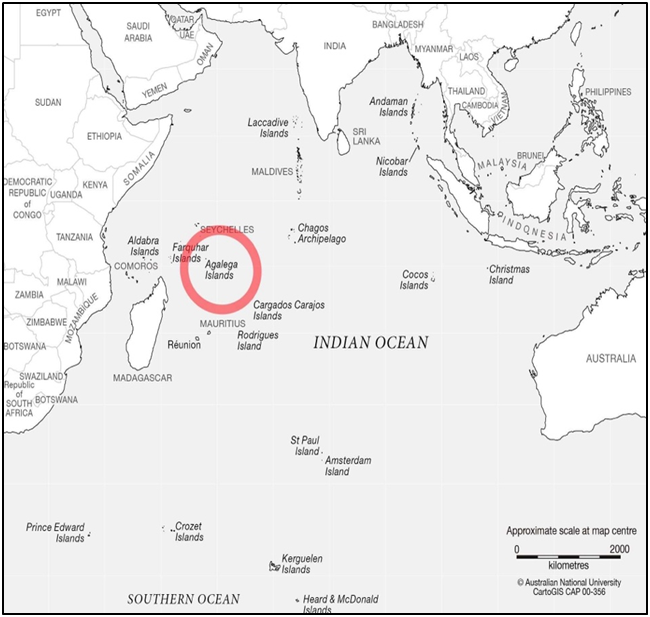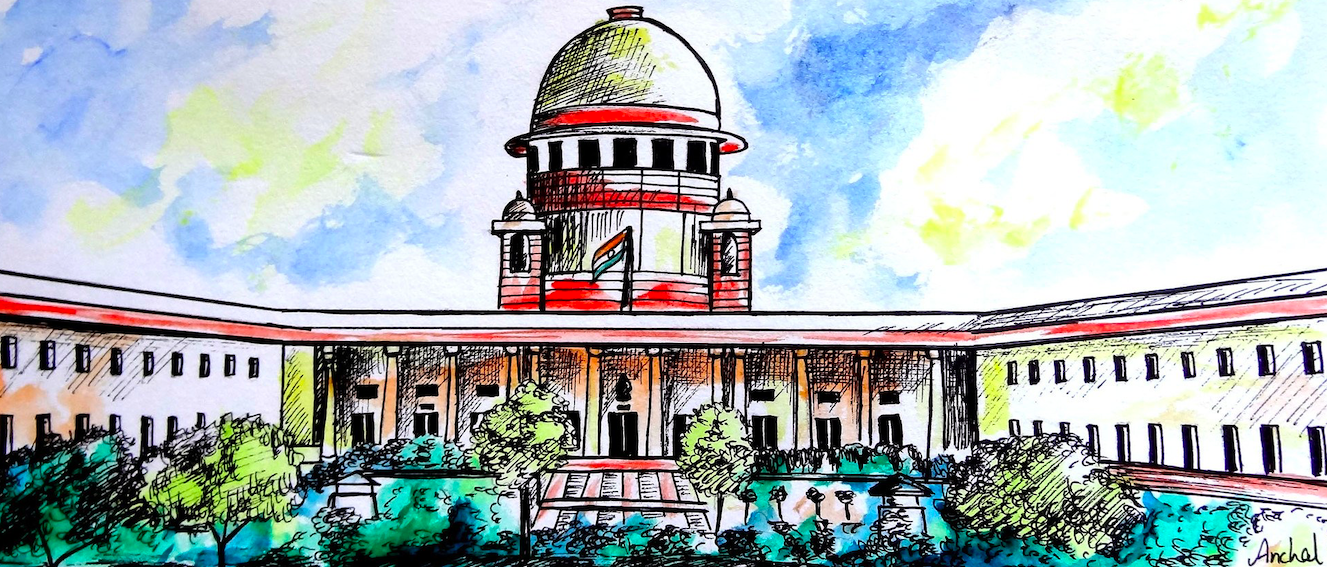Why in News?
- A five-judge Constitution bench of the Supreme Court overruled its 2018 decision in Asian Resurfacing v. Central Bureau of Investigation.
- The SC observed that a stay order can only come to an end after all the parties in the case have been heard first.
What’s in Today’s Article?
- The Big Problem of Undue Delays in Trials in India
- What is the Asian Resurfacing Case Ruling?
- What was the Impact of the Asian Resurfacing Case Ruling?
- Arguments of the Petitioner and the Government
- On What Grounds has the Asian Resurfacing Case Ruling been Undone?
The Big Problem of Undue Delays in Trials in India:
- In India’s three-tier system of courts, a trial court’s decision can be challenged at every stage, not just at the final stage after a verdict is delivered.
- Stay orders are passed for a court to temporarily halt a judicial proceeding, to secure the rights of a citizen.
- Grant of stay invariably delays the trial (for decades sometimes), irrespective of which side benefits from it. For example,
- If an HC in a case had to consider the challenge against an order framing charges (by the trial court), it would first grant a stay of trial and then grant a date for hearing arguments on framing charges.
- With Courts bogged down with criminal cases that perhaps need more immediate attention, such as bail cases, the hearing against framing of charges gets delayed.
What is the Asian Resurfacing Case Ruling?
- In 2018, a three-judge bench of SC was deciding a batch of cases involving the Prevention of Corruption Act.
- These batches of cases had one aspect in common – that the respective High Courts had granted a stay at some stage of trial.
- In its ruling, the SC (while using its powers under Article 142) held that –
- While a HC has jurisdiction in appropriate cases to consider the challenge against an order framing charge and also to grant stay,
- But how such power is to be exercised and when stay ought to be granted needs to be considered further.
- To address the big problem (of undue delays in trials) plaguing the criminal justice system, the SC held that interim orders of stay at the HC and Civil Court level will be only valid for six months.
- At the end of this period, they will automatically be rescinded or “vacated”.
What was the Impact of the Asian Resurfacing Case Ruling?
- Additional stay trials arose unexpectedly following the 2018 verdict. Lawyers would cite the Asian Resurfacing ruling to alter the status quo. For example,
- Say a frivolous FIR is filed and a trial court has issued summons.
- This would be challenged before the HC, but the HC would first stay the summons and grant a date for the hearing.
- But citing the Asian Resurfacing case meant that a trial court would issue non-bailable warrants suddenly for not appearing before the Court.
- All of this occurred while the HC had not yet heard arguments for quashing the summons itself.
- While this added the load on the HCs and burdened the average litigant, the verdict also raises key questions of law.
- Is it possible for the SC (under Article 142) to order the automatic revocation of all interim orders of the HC delaying proceedings in civil and criminal matters when a specified term expires?
- Whether the SC (under Article 142) can direct the HCs to decide pending cases in which interim orders of stay of proceedings have been granted on a day-to-day basis and within a fixed period?
Arguments of the Petitioner and the Government:
- The vacation of a stay is a judicial decision which needs application of mind, without which judicial decisions would become arbitrary.
- Automatic vacation of stay would be antithetical to this principle.
- The Asian Resurfacing judgement infringes on the discretion afforded to HCs to decide applications for vacation of stay orders under Article 226(3) of the Constitution.
- Deciding timelines for judicial proceedings is a decision for Parliament to make through its law-making power, not the courts.
On What Grounds has the Asian Resurfacing Case Ruling been Undone?
- The five-judge bench held that “Sometimes, in the quest of justice we end up doing injustice. Asian Resurfacing is a clear example of the same.”
- The constitutional courts should refrain from laying down precise timelines for deciding cases.
- This highlights the discretion that should be given to lower courts which are more aware of “grassroots issues”.
- The SC also pointed out that courts often have different patterns when it comes to their pending caseload, and so the concerned court is best placed to decide which cases to prioritise.
- Automatically vacating a stay order after six months would in fact “defeat justice” by nullifying interim orders that had been lawfully passed without hearing the parties.
- The six-month time limit would amount to court-created legislation, which is impermissible.
- Only the legislature has the power to decide if a category of cases should be decided within a specific amount of time.
- Article 226(3) of the Constitution already provides a two-week time limit for HCs to consider an application for the vacation of an interim order.
- If the application is not disposed of within those two weeks, Article 226(3) provides that the interim order will be vacated.
Govt amends rules related to postal ballots

Why in news?
- In the next Lok Sabha and State Assembly elections, elderly citizens aged 85 and above can choose postal ballots.
- The government has changed the rule, increasing the eligibility from the previous limit of 80 years.
What’s in today’s article?
- Postal Voting
- News Summary
Postal Voting
- About
- Postal voting, also known as absentee voting, is a method of voting in which electors cast their ballots by mail rather than in person at a polling station.
- This method is particularly useful for individuals who are unable to vote in person due to various reasons.
- E.g., being away from their home constituency, having a disability, or being engaged in essential services on election day.
- Eligibility
- Service voters:
- Members of the armed forces, paramilitary forces, and other government employees deployed on election duty far from their home constituencies.
- Absentee voters:
- Individuals who are unable to vote in person due to reasons such as being away from their home constituency for work, illness, or disability.
- Electors on election duty:
- Government officials and polling staff who are assigned duties at polling stations other than their own.
- Electors under preventive detention:
- Individuals who are detained under preventive custody orders during the election period.
- Eligibility during Covid pandemic
- During the Covid-19 pandemic, the facility was extended to those infected or suspected to be infected with the coronavirus, starting with the Bihar Assembly elections in 2020.
- Before the Bihar elections, the EC had recommended extending the postal ballot facility to those above 65 years of age and the Law Ministry had notified the amendment in June 2020.
- However, the ECI eventually decided not to extend the facility to those above 65 years.
- This was because the number of polling parties that would be required to cover the expanded age group would have been impractical.
- Finally, in August 2023, the Law Ministry again amended the rule to take the eligibility back to 80 years from 65 years.
- Significance
- Postal ballots play a crucial role in ensuring that eligible voters exercise their franchise, even when they are unable to vote in person.
- They expand the accessibility of the electoral process and contribute to a more inclusive and representative democracy.
- Issues associated with postal ballot
- Vote buying
- There is a chance that someone else is casting the vote on behalf of the voter because the voter chooses to sell his or her vote.
- Freedom of voting & secrecy might be affected
- As the voter will have vote on a printed ballot from their respective home, someone might observe the voter casting her/his vote.
- This might lead to coercion or forcing the voter to make a particular choice.
- Reliability and delay of postal services
- While the reliability and delay of postal services in one’s own country are well known to the election commission, conditions might be worse in other countries.
- Consequently, the postal voting process must start early enough to take into accountany unforeseeable conditions.
News summary: Govt amends rules related to postal ballots
- The government, in consultation with the Election Commission, amended the Conduct of Election Rules (1961) to raise the minimum age for senior citizens, eligible for voting by postal ballot, to 85 years from 80 years.
- As per Rule 27A of the Conduct of Election Rules, postal ballot facility was extended to:
- senior citizens above 80 years,
- persons with disability,
- poll officers, and
- Covid-positive persons starting with the 2020 Bihar assembly poll, which coincided with the pandemic period.
- However, a review by the Election Commission showed that no more than 2-3% of 80-plus voters had opted to vote through postal ballots; the rest insisted on turning up at the polling station to cast their vote.
- The total number of senior citizens above 80 years is 1.75 crore, with those aged 80-85 years being 98 lakh.
- Hence, the govt decided to amend the rule.
India to set up International Big Cat Alliance

Why in news?
- The Union Cabinet approved the establishment of International Big Cat Alliance (IBCA) with headquarters in India with a one-time budgetary support of Rs.150 crore for a period of five years from 2023-24 to 2027-28.
- Framework of Agreement of IBCA has been drafted largely on the pattern of International Solar Alliance (ISA).
What’s in today’s article?
- International Big Cat Alliance (IBCA)
- Is India Home to All Seven Big Cats?
International Big Cat Alliance (IBCA)
- Background:
- During the Global Tiger Day event in 2019, PM Modi urged global leaders to unite against poaching in Asia.
- He repeated this call during the 50th anniversary celebration of India’s Project Tiger on April 9, 2023, announcing the launch of an International Big Cat Alliance.
- About
- The International Big Cat Alliance (IBCA) is a global alliance that aims to conserve the world’s seven main big cats.
- It will provide a platform for the member nations to share knowledge and expertise and extend support to recovery efforts in potential habitats.
- Aim: To work towards the protection and conservation of the seven major big cats — tiger, lion, leopard, snow leopard, puma, jaguar and cheetah.
- HQ: India
- Membership
- Membership to the alliance will be open to 96 range countries.
- These are the countries which contain the natural habitat of these big cats.
- The alliance is also open to other countries, conservation organisations, scientific organisations, businesses, and corporates interested in supporting big cats.
- So far, 16 countries have given their written consent to be part of the IBCA.
- In addition, nine international organizations, including the International Union for Conservation of Nature (IUCN), and the World Wildlife Fund (WWF) International, have given consent to join the alliance.
- Governance Structure
- A General Assembly consisting of all member countries.
- A Council of at least seven but not more than 15 member countries elected by the General Assembly for a term of 5 years, and a Secretariat.
- Upon the recommendation of the Council, the General Assembly will appoint the IBCA Secretary General for a specific term.
- A Secretariat
- Funding
- The first five years (2023-24 to 2027-28) will be supported by India’s ‘total grant assistance’ ofRs.150 crore.
- After that, the IBCA is expected to sustain itself through membership fees and contributions from bilateral and multilateral institutions and the private sector.
- Activities
- It will provide a platform for the member nations to share knowledge and expertise and extend support to recovery efforts in potential habitats.
- Its major activities will include advocacy, partnership, knowledge e-portal, capacity building, eco-tourism, partnerships between expert groups, and finance tapping.
- IBCA will also assist existing species-specific inter-governmental platforms to boost conservation efforts.
- Benefits
- The advantages of membership are a central common repository for technical know-how and a corpus of funds.
- The alliance will strengthen existing species-specific intergovernmental platforms, networks, and transnational initiatives on conservation and protection.
- Frontline staff in member-countries will be trained in eliciting local support for big-cat conservation, and research and development in wildlife monitoring.
- Local communities living in the vicinity of the forests will also be encouraged and trained in developing eco-tourism and livelihood opportunities.
- It recognizes the importance of integrating biodiversity policies with sustainable development goals (SDGs) to achieve holistic and inclusive conservation outcomes.
Is India Home to All Seven Big Cats?
- Out of 7 big cats, India is home to 5: Tiger, Lion, Leopard, Snow Leopard and Cheetah
- Royal Bengal Tiger
- As per the latest Tiger Census conducted in 2018-19, tiger population in India has increased to 2967.
- India now accounts for about 70% of the world’s tiger population.
- Asiatic Lion
- Gir National Park in Gujarat is the last abode for the surviving population of the Asiatic Lions in the world.
- Since the late 1960s, population of Asiatic Lions has increased from less than 200 to 674 (Census 2020).
- Leopard
- It is estimated that 12,000-14,000 leopards occur in India, and the population is the most genetically diverse/outbred out of all the subspecies in Asia.
- Snow Leopard
- Snow leopard is native to the mountain ranges of Central and South Asia.
- In India, their geographical range encompasses a large part of the western Himalayas including the territories of Jammu and Kashmir, Ladakh, Himachal Pradesh, Uttarakhand and Sikkim and Arunachal Pradesh in the eastern Himalayas.
- In 2021, there are about 7,500 snow leopards left in the world, out of which 500 are in India.
- Cheetah
- Cheetah had become extinct in India since 1952.
- In September 2022, Cheetahs have been reintroduced in the wild in India as 8 Cheetahs were imported from Namibia.
- They were released into the Kuno National Park in Madhya Pradesh in November, 2022.
Agalega Islands & Its Significance for India

Why in the News?
- Prime Minister Narendra Modi and Mauritius Prime Minister Pravind Jugnauth virtually inaugurated an air strip and a jetty to ensure maritime security and connectivity to Mauritius’ Agalega islands.
What’s in Today’s Article?
- About Agalega Islands (Location, Significance for India, etc.)
- News Summary
About Agalega Islands:

- Agalega islands lies approximately 650 nautical miles (1,050 km) north of Mauritius.
- It is a group of two islands with a total area of 26 sq km and a native population of about 300 people.
Significance of Agalega Islands:
- The development of the Agalega Islands is in the socio-economic and national security interest of Mauritius, and also aligns with India’s maritime vision.
- The islands, a dependency of Mauritius, were not developed for many years.
- The sustainability and well-being of the islands’ inhabitants presented a challenge, as even the most basic needs required referral to Mauritius.
- The near absence of an official government or security presence was a serious vulnerability.
- This vulnerability could be converted to strength by developing the islands and creating facilities that could operate ships and aircraft.
- Building a jetty and an airstrip was therefore considered imperative by the government of Mauritius.
- They chose India as their preferred development partner.
Why Did Mauritians Choose India?
- Ties between India and Mauritius go back to 1948, 20 years before the country’s independence from Britain.
- Seventy per cent of the inhabitants of Mauritius are of Indian origin, and the two countries share deep historical, social, and cultural bonds.
- The consistent feature in the history of bilateral relations has been friendship and trust at all levels — the political leadership, the diplomatic and military communities, as well as between the peoples of the two countries.
- The development of these strategically located islands required trust more than anything else. Hence, India was the obvious choice.
Significance for India:
- The goodwill and trust between the two countries will be further enhanced.
- India will welcome opportunities to further develop these islands in collaboration with Mauritius as the latter deems appropriate.
- The joint development of Agalega underscores India’s commitment to the vision of Security and Growth for All in the Region (SAGAR).
- It will indicate to other maritime neighbours that India is a benign and friendly country that respects the sovereignty of independent nations.
- India would like to emerge as the preferred development and security partner in the Indian Ocean Region.
News Summary:
- Prime Minister Narendra Modi and Mauritius Prime Minister Pravind Jugnauth virtually inaugurated an air strip and a jetty in Mauritius’ Agalega islands.
- PM Modi said the two countries are working actively towards ensuring security, prosperity and stability in the Indian Ocean region.
- These projects will “enhance the island’s capacity and capabilities in marine surveillance and security, while also meeting development objectives”.
- Since 2003, several attempts had been made to upgrade the air strip, but nothing concrete materialised.
- The move to develop and build the new airstrip and the jetty came after PM Modi’s visit to the island country in March 2015.
- PM Modi flagged concerns over challenges in the Indian Ocean region and said India and Mauritius are “natural partners” in the maritime domain to deal with them.








.jpg)




